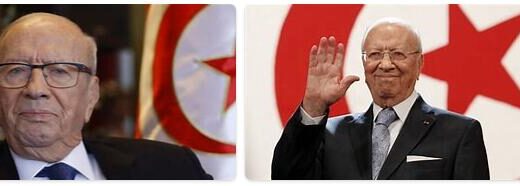Western Sahara Government and Politics
The westernmost end of the Sahara has been populated by Moors, Tuaregs and Tubus since the fifth century. These peoples have emerged as a result of the millennial desertification that the area has been the subject of since the Stone Age. The presence of early populations may include: is demonstrated using the cave paintings in Tassilih. In the 7th century, the migration from Yemen reached the area and mingled with the local people. Four hundred years later, the first community formation occurred among the people of the Sahara.
The main reason for the Spanish occupation of the coast of Western Sahara was strategic: the protection of the eastern flank of the Canary Islands. Until 1886, the occupation remained largely to Villa Cisneros – today’s Dakhla. That year, the Madrid government – as a result of the Berlin Conference – decided that no “empty areas” would be left to other powers. But when in 1904 an agreement was reached with France which set the borders of the Spanish Sahara, conditions returned to the former situation: the nomadic peoples lived in complete independence in an area shared by four colonial powers, and the peoples nothing about the agreements that had been made in the European government seats.
Western Sahara History and current politics
Western Sahara was conquered by Morocco in 1975, but the occupation of the former Spanish colony has not been internationally recognized. An armistice was established in 1991, but the referendum on independence that was then agreed has not come to fruition. Morocco now refuses to keep it. Since 2007, the UN has been negotiating between Polisario and Morocco, but the peace process has in practice been completely locked. Check Countryaah for other countries that start with W.
Western Sahara has throughout its known history been populated by nomadic tribes for which no definite boundaries existed. The history of the area is therefore closely related to the neighboring countries. The Almoravid dynasty, which in the 1000s conquered the entire north-west African Maghreb and Muslim Spain, was a Berber from today’s Mauritania and Western Sahara.
In 1434, the Portuguese managed to get past the difficult waters off Cap Bojador on the coast of Western Sahara and in 1502 Spanish settlers founded the trading station Villa Cisneros (now Dakhla). Europeans’ discovery of the sea route to black Africa undermined the large caravan transport of gold and other goods through the Sahara, weakening the local peoples. In the late 19th century, the Spaniards began their colonization of the area, the southern part of which they called Río de Oro while the northern part was Saguia el-Hamra (see also Morocco: Ancient History).
When France took control of Mauritania in the early 1900s, the southern clans were driven within reguibat and other tribes north. They gathered around the religious leader Ma el-ainin, who built a religious learning center in Smara in today’s Western Sahara. After a series of rebellions against the colonizers, their independence in 1934 was crushed by French and Spanish in collaboration.
After Morocco’s independence in 1956, the country raised territorial demands on the Spanish Sahara (see Morocco: Modern History). But Spain incorporated the colony with the mother country in 1958 and the Saharan tribal leader was given office in the Spanish parliament. That same year, French and Spanish troops fought a Moroccan-backed uprising in Western Sahara, which drove many Western Saharans to flee to southern Morocco in particular. At the same time, the phosphate mine in Boucraa, one of the largest in the world, had given Western Sahara the basis for the hope of an independent state.
In 1966, the UN General Assembly voted in favor of Western Sahara’s self-determination. In 1970, Western Sahara nationalists held their first major demonstration against the Spanish colonial empire. It ended in a carnage when the police opened fire. In the wake of this was the liberation movement Frente Polisario (Frente Popular para la Liberación de Saguía el Hamra y Río de Oro, the People’s Front for the Liberation of Saguía el Hamras and Río de Oros), which in May 1973 launched an armed struggle for independence.
Spain was about to leave Western Sahara when Morocco invaded the territory in 1975. The following year, Polisario proclaimed the independent Saharan Arab Democratic Republic, SADR. A war was going on between Morocco and Polisario until 1991, when a ceasefire was concluded. The UN effort Minurso has since monitored the ceasefire and has the task of organizing a promised referendum. It has not been held, mainly because the parties cannot agree on who should have the right to vote.
Read more about the conflict in Conflicts: Western Sahara and the current situation in the Moroccan-occupied areas as well as in the Polisario and refugee camps.



